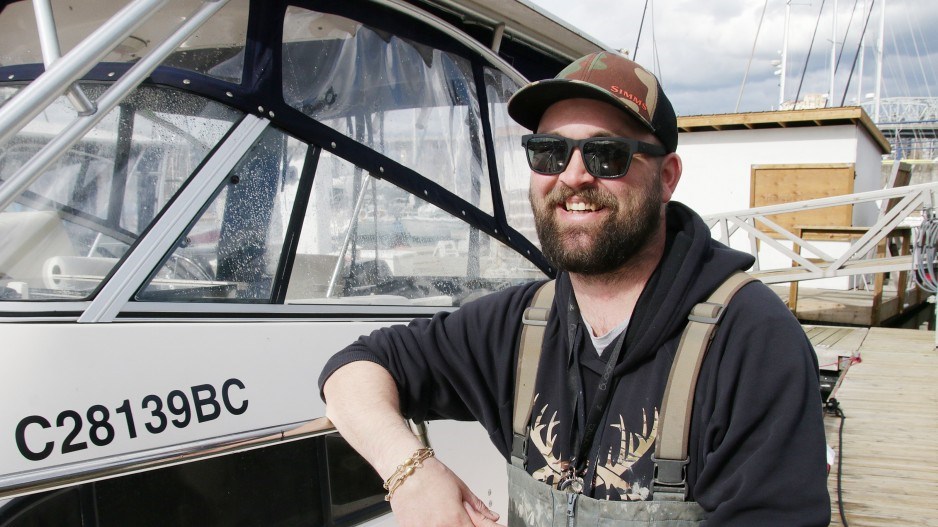Three years after border closures clobbered sa国际传媒’s tourism industry, hunting and fishing guides and lodges in sa国际传媒 say they are hoping for a banner year in 2023, as Americans and other international anglers and big-game hunters return in force.
“We’re almost fully booked for summer already,” said Sam Vandervalk, owner of Salmon Eye Charters on Vancouver Island.
Guide outfitters and lodges were hit hard in 2020 and into 2021 with pandemic mandates and border closures. U.S. tourists have traditionally made up a significant chunk of their customer base – and they are big spenders. According to the Canadian Federation of Outfitter Associations, a typical fishing charter client will spend more than $5,000 on a fishing trip to sa国际传媒, while hunters will spend more than $35,000.
A Conference Board of sa国际传媒 economic impact analysis estimated that hunting and fishing in sa国际传媒 generated $1.8 billion in revenue in 2018 – $1.2 billion from fishing, and $600 million from hunting. The revenue comes from sales generated by tackle shops and marinas, fishing guides and lodges, hotel stays and charter flights.
Historically, about 65 per cent of the customers for fishing lodges have come from outside of the province. That figure fell to zero in 2020, due to pandemic border closures and lockdowns. Business generally rebounded for sa国际传媒 guides and outfitters in 2022.
“Last year was really excellent, particularly Vancouver Island,” said Owen Bird, executive director for the Sport Fishing Institute of BC.
“What happened last year is there was so much demand that we couldn’t keep up, and I think one of the reasons why was that, after COVID, I think a lot of operators packed it in,” said Jason Assonitis, owner of Bon Chovy Fishing Charters in Vancouver.
Scott Ellis, executive director for the Guide Outfitters Association of BC, said hunting also rebounded in 2022, though it was still down from pre-pandemic numbers.
In 2019-20, there were more than 4,820 sa国际传媒 basic hunting licences issued to non-residents, according to sa国际传媒 government data. Only around 1,140 issued in 2020-21, a 76-per-cent change.
“So, huge impact,” Ellis said. “That’s really the international traveller. Last year rebounded nicely.”
Around 2,950 hunting licences were issued last year, and Ellis said he expects 2023 will be the year when the hunting outfitter sector recovers to pre-pandemic levels.
“My prediction is we’re going to exceed pre-pandemic levels of that 4,850,” Ellis said. “We’re going to be above that.”
In recent years, there have been numerous restrictions and closures imposed on the sport fishing sector to protect chinook salmon, which are favoured by both anglers and the Southern Resident killer whale. Angling restrictions have included the non-retention of chinook salmon between May and August.
“It was a very good year of fishing, however we had very heavy restrictions put upon all recreational anglers and charter operators in the southern Salish Sea – Vancouver, Victoria, Nanaimo,” said Dan MacLeod, owner of Pursuit Sport Fishing Charters.
Pre-pandemic, about 30 per cent of MacLeod’s customers were Americans, many of whom came to Vancouver for conferences or cruises. Many out-of-province anglers simply won’t book trips if they can’t keep the fish they catch, MacLeod said.
“They don’t come up, or they’ll go to the west coast of Vancouver Island or they’ll go up to Haida Gwaii or north Vancouver Island.”
This year, Bird said it’s expected that Fisheries and Oceans sa国际传媒 will open a selective marked fishery for hatchery chinook in April and May, which could give a bit of a boost to the local saltwater fishing sector, which includes guide businesses and tackle shops. Under a selective marked fishery, anglers would be allowed to retain chinook that are marked as hatchery fish.
“It looks very promising that those are going to go ahead,” Bird said. “There’ll be some opportunity in the early part of the season in and around Vancouver on those marked fish.”
Assonitis said having a selective marked fishery for chinook would be a “game-changer” for companies like his.
“That alone would change things dramatically, because that’s been one of our issues in the last few years – just having uncertainty,” he said.
In the past, about half of Bon Chovy’s clients have been local and half from outside the province, with about 25 per cent of the latter coming from the U.S.
For Assonitis’ customers, salmon fishing is more of a checkmark activity than a destination activity, so it’s not the sort of thing that’s booked months in advance, like fishing lodges.
“We are kind of a side thing that people do on a trip to Vancouver,” Assonitis said.
Another attraction in sa国际传媒 for American anglers is halibut. The catch is determined by the International Pacific Halibut Commission, and the fishing for halibut is generally better in sa国际传媒 than in Washington.
“Washington state citizens have two or three days to fish for halibut,” Bird noted. “We will have the whole season.”


